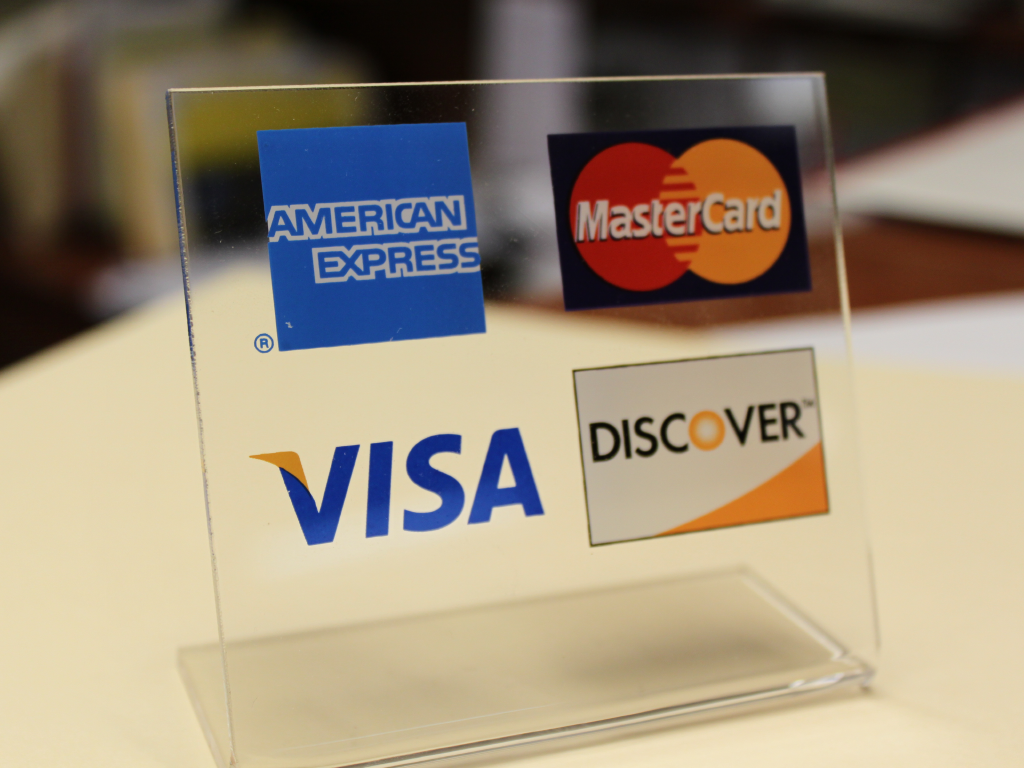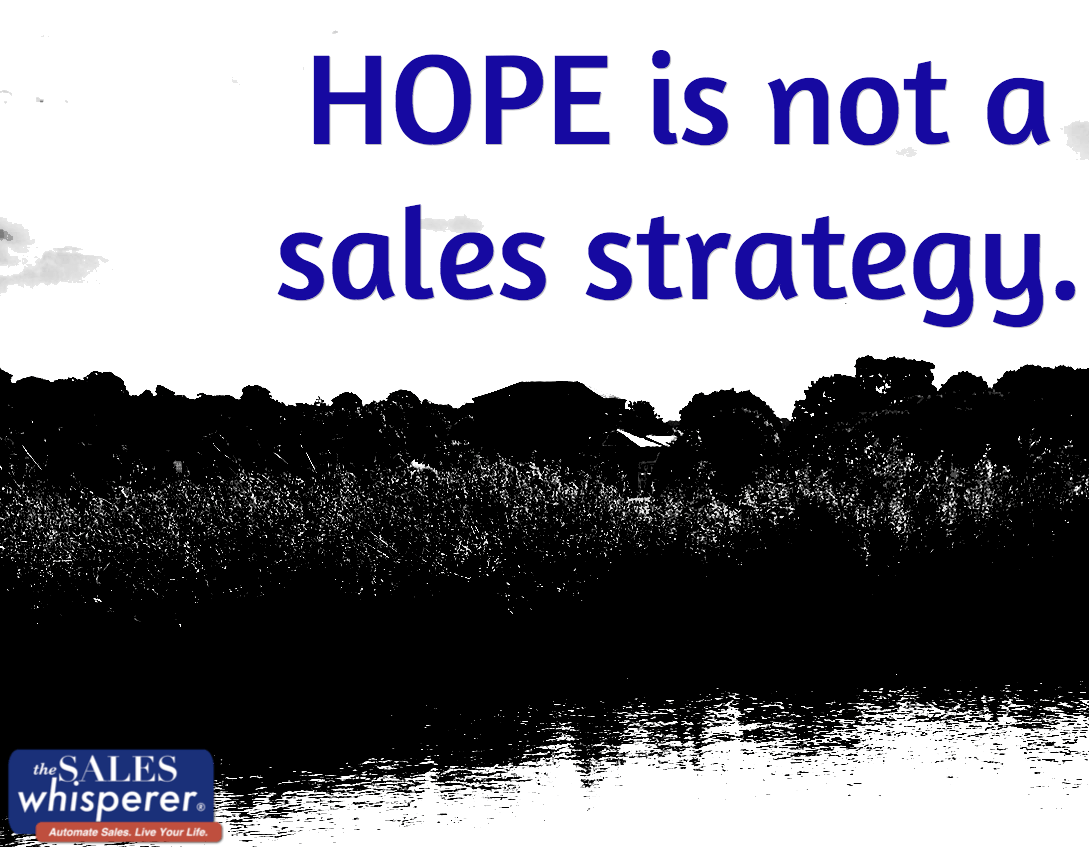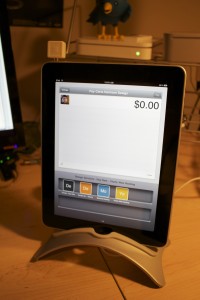
July 21st, 2016 by Elma Jane
Always ask for the card security codes:
CVV2 for Visa
CVC2 for MasterCard
CID for Discover and American Express.
Always use the Address Verification Service (AVS) and only process sales after receiving a positive AVS response.
Avoid using voice authorizations, unless absolutely necessary.
Billing descriptor must set up properly and shows your phone number. Customer can contact you directly if there is an issue,
Consider using the associations’ 3-D secure services:
Verified By Visa
SecureCode by MasterCard
A 3-D transaction confirmation proves card ownership and protects you from certain types of chargeback. An additional layer of security for online credit and debit card transactions.
Inform your customers by email when a refund has been issued or a membership service cancelled. Notify them of the date the refund was processed and provide a reference number.
Make available customer support phone number and email address on your website so that customers can contact you directly. You need to meet this requirement before opening a merchant account.
Make it easy for your customers to discontinue a recurring plan, membership or subscription. Have a no-questions-asked policy.
Notify your customers by email of each transaction and indicate that their cards will be charged.
Obtain a confirmation of delivery for each shipment.
Process refunds as quickly as possible.
Secure an authorization approval for every transaction.
Secure customers’ written or electronic signatures, for recurring payments or monthly fees. Giving you express permission to charge their cards on a regular basis.
Terms and conditions must be clearly stated on your website. Customers must acknowledge acceptance by clicking on an Agree or a similar affirmative button.
Transaction amount must never exceed the authorized amount.
You are required to reauthorize the transaction before settling it if an authorization approval is more than seven days old.
Posted in Best Practices for Merchants, Credit card Processing, Credit Card Security, Merchant Services Account Tagged with: card, chargeback, credit, customer, debit, merchant, merchant account, online, sales, Security, service, transaction

June 1st, 2016 by Elma Jane
Close more sales and overcome some of the common strategic mistakes sales people make with the following strategies.
Become a partner – people don’t buy from companies, people buy from people. Building a relationship with a potential partner by getting to know them personally and know their professional needs is very important in sales. Your potential partner must value you before he or she can trust you with their business.
Be the expert – Show your knowledge and expertise about your industry. Offer a valuable service and be the expert in your field.
Communicate – in building trust with a partner, establishing and maintaining effective communications is essential. Follow up in a timely manner, be available, return calls promptly with the information requested. Keeping communications open is the best way to keep a partner.
Eliminate the difficulty of switching – it is vital to let your partner know the ease of transition and benefits to moving to your solution. No matter how great the product or service is, when a business considered making a change there still apprehension.
Focus on value – build value. Most are willing to pay fairly for a good service.
Make it simple – make your product, service or offer simple. Explain your offer in a way they can not only understand but convey to others.
Hard work and dedication are important in sales, but you will close more deals if you have a good sales strategy.
Posted in Best Practices for Merchants Tagged with: industry, product, sales, service, solution

May 25th, 2016 by Elma Jane
No one likes waiting in a checkout line, the faster your checkout line moves, the faster you are able to turn more sales. Quick checkout lines lead to increased sales and higher customer satisfaction .
Cut your line and increase your sales by:
Upgrading your POS – if you haven’t upgraded your POS, do it now. Choosing a modern POS that is simple and easy to use like the iCT250, offers a smart, effective and highest security payment experience designed for merchants and easier for employees to understand.
Multiple Checkout – multiple checkout counters may be necessary depending on the size of your store. In a high volume situation such as the holiday season, more opportunities for checkout may be beneficial.
Accept A Variety of Payments – having alternative forms of payment by accepting credit, debit, EMV/NFC and mobile wallets, will open the door for a variety of customers, but also allow the customer to pay the way they want in a most convenient way.
Train Employees – most importantly, train your employees on how to use your new POS system. Employees need to be the expert on POS so that they are able to assist customers who may need help conducting their transaction.
Posted in Best Practices for Merchants Tagged with: credit, customer, debit, EMV, merchants, mobile, mobile wallets, nfc, payment, POS, sales, Security, transaction
December 15th, 2014 by Elma Jane
Every business knows how crucial sales are to keeping a company going. Without paying customers, there’s no money coming in, which means no profits to help the business grow. But convincing people to buy something isn’t always an easy task for a sales person, and many entrepreneurs still struggle with selling.
It’s not about giving a rundown of the facts and features of a product, it’s about communicating the ways in which it can help the buyer. Stop thinking from the sales perspective. Think about what it will do for others. Take your elevator pitch and transcend it to other people’s perspective and solve their problems.
Five key components to a successful sales presentation.
A call to action. Ask someone to take action at the end of a sales presentation. If you don’t ask for the sale, they probably won’t go through with it. Always approach sales from a helping perspective. Instead of putting pressure on sales reps to make the sale, focus on what the product means to the buyer.
If your sales team focus on how to communicate effectively and help the person, it takes pressure off and puts the focus and energy where it needs to be. A superior salesperson inspires the buyer to feel the benefits of what they have.
A grabber. This is a mutual point of agreement where sales person connect with the buyer. This is usually established in a face-to-face conversation (the person nods in agreement when sales reps speak to them), but if you’re not able to see the person, you need to start off with the mind-set that he or she agrees with what you’re saying.
A point of difference. Explain to the buyer what’s different about your product, and why it occupies a unique space in the market.
A solution to a problem. Consumers purchase products that they believe will solve a problem they have. Your product may be the perfect solution, but they won’t know that unless sales reps explain the problem and how they can solve it. Stating the problem you solve and talking about it as much as if not more than the solution.
WSGAT. (What’s So Great About That?) is all about demonstrating the benefits of using your product. When discussing your product’s features, a sales person can’t just spout facts. You need to understand why a buyer should care about that feature, and how it contributes to solving the problem you outlined.
Posted in Best Practices for Merchants Tagged with: consumers, customers, product, sales
December 15th, 2014 by Elma Jane
Every business knows how crucial sales are to keeping a company going. Without paying customers, there’s no money coming in, which means no profits to help the business grow. But convincing people to buy something isn’t always an easy task for a sales person, and many entrepreneurs still struggle with selling.
It’s not about giving a rundown of the facts and features of a product, it’s about communicating the ways in which it can help the buyer. Stop thinking from the sales perspective. Think about what it will do for others. Take your elevator pitch and transcend it to other people’s perspective and solve their problems.
Five key components to a successful sales presentation.
A call to action. Ask someone to take action at the end of a sales presentation. If you don’t ask for the sale, they probably won’t go through with it. Always approach sales from a helping perspective. Instead of putting pressure on sales reps to make the sale, focus on what the product means to the buyer.
If your sales team focus on how to communicate effectively and help the person, it takes pressure off and puts the focus and energy where it needs to be. A superior salesperson inspires the buyer to feel the benefits of what they have.
A grabber. This is a mutual point of agreement where sales person connect with the buyer. This is usually established in a face-to-face conversation (the person nods in agreement when sales reps speak to them), but if you’re not able to see the person, you need to start off with the mind-set that he or she agrees with what you’re saying.
A point of difference. Explain to the buyer what’s different about your product, and why it occupies a unique space in the market.
A solution to a problem. Consumers purchase products that they believe will solve a problem they have. Your product may be the perfect solution, but they won’t know that unless sales reps explain the problem and how they can solve it. Stating the problem you solve and talking about it as much as if not more than the solution.
WSGAT. (What’s So Great About That?) is all about demonstrating the benefits of using your product. When discussing your product’s features, a sales person can’t just spout facts. You need to understand why a buyer should care about that feature, and how it contributes to solving the problem you outlined.
Posted in Best Practices for Merchants Tagged with: consumers, customers, product, sales
September 11th, 2014 by Elma Jane
Online retailers are finding the bricks-and-clicks strategy to be an effective way to serve and engage shoppers. Perhaps that is why an increasing number of ecommerce merchants are setting up shop offline. It’s important to note, however, that a bricks-and-clicks business isn’t just about having a physical store and an ecommerce site. For this model to be effective, each channel must complement and add value to the other.
Guidelines to execute a bricks-and-clicks strategy:
Allow Access to Online Account Information in Physical Store
Bridge the gap between bricks and clicks by giving your customers and physical-store staff access to online account information. Doing so can enhance shopping experiences and drive sales.
Integrate Online and Offline Inventory, Fulfillment
Offer click-and-collect services that allow shoppers to buy merchandise online and pick it up at a local retail branch or service station. Many consumers would rather forgo the shipping costs and wait time and instead pick up their items at a time and place that’s convenient for them. Also, use your brick-and-mortar inventory when an item is out of stock online.
Use Online Data for Offline Selling, and Vice Versa
Data pertaining to online sales and traffic won’t just help you optimize your ecommerce site. It can also apply to offline decisions. For instance, if you see an increase in sales for a particular product on your website, you should consider promoting it offline, as well, to your brick-and-mortar shoppers.
Also pay attention to social media data such as Facebook likes and Pinterest pins. What’s trending on social sites can help with merchandising and marketing. Consider something similar in your brick-and-mortar business. Take note of the most liked, viewed, and pinned items online and then leverage that information when making decisions regarding product displays, inventory and more.
You can also use offline information to enhance your ecommerce site. Utilize in-store analytics tools, such as people counters and sensors, to better understand how your offline customers behave and then compare that with online behavioral data to spot patterns and opportunities.
Qualitative information, such as shoppers’ common questions and concerns, can also be used to improve your online shop. For instance, if your physical store associates keep getting the same questions about a particular product, there’s a good chance that online shoppers have similar queries. So you may want to include the answer in that item’s product description page.
Use Smartphone Beacons in Physical Stores
Beacons are Bluetooth-enabled devices that let brick-and-mortar merchants send customized offers and recommendations to their shoppers via their smartphones based on where the shoppers are in the store. For example, if a shopper is in the footwear department, the retailer can use its store beacons to send the shopper a coupon for shoes. Bricks-and-clicks businesses can also use the technology to send tailored offers to shoppers based on their online behavior.
Posted in Best Practices for Merchants Tagged with: account, Beacons, bluetooth, brick and mortar, business, consumers, coupon, customers, data, devices, ecommerce, Facebook, inventory, marketing, merchandising, Merchant's, Online Account Information, Online Data, pinterest, product, sales, shoppers, site, smartphone, social sites, store, website
September 10th, 2014 by Elma Jane
If your businesses considering an iPad point-of-sale (POS) system, you may be up for a challenge. Not only can the plethora of providers be overwhelming, but you must also remember that not all iPad POS systems are created equal. iPad POS systems do more than process payments and complete transactions. They also offer advanced capabilities that streamline operations. For instance, they can eliminate manual data entry by integrating accounting software, customer databases and inventory counts in real time, as each transaction occurs. With these systems, you get 24/7 access to sales data without having to be in the store. The challenge, however, is knowing which provider and set of features offer the best iPad POS solution for your business. iPad POS systems vary in functionality far more than the traditional POS solutions and are often targeted at specific verticals rather than the entire market. For that reason, it’s especially important to compare features between systems to ultimately select the right system for your business.
To help you choose a provider, here are things to look for in an iPad POS system.
Backend capabilities
One of the biggest benefits of an iPad POS system is that it offers advanced features that can streamline your entire operations. These include backend processes, such as inventory tracking, data analysis and reporting, and social media integration. As a small business, two of the most important time saving and productivity-boosting features to look for are customer relationship management (CRM) capabilities and connectivity to other sales channels. You’ll want an iPad POS that has robust CRM and a customizable customer loyalty program. It should tell you which products are most and least frequently purchased by specific customers at various store locations. It should also be able to identify the frequent VIP shoppers from the less frequent ones at any one of your store locations, creating the ultimate customer loyalty program for the small business owner. If you own an online store or use a mobile app to sell your products and services, your iPad POS software should also be able to integrate those online platforms with in-store sales. Not only will this provide an automated, centralized sales database, but it can also help increase total sales. You should be able to sell effortlessly through online, mobile and in-store channels. Why should your customers be limited to the people who walk by your store? Your iPad POS should be able to help you sell your products through more channels, online and on mobile. E-commerce and mobile commerce (mCommerce) aren’t just for big box retailers.
Cloud-based
The functions of an iPad POS solution don’t necessarily have to stop in-store. If you want to have anytime, anywhere access to your POS system, you can use one of the many providers with advanced features that give business owners visibility over their stores, its records and backend processes using the cloud. The best tablet-based POS systems operate on a cloud and allow you to operate it from any location you want. An iPad POS provider, with a cloud-based iPad POS system, businesses can keep tabs on stores in real time using any device, as well as automatically back up data. This gives business owners access to the system on their desktops, tablets or smartphones, even when not inside their stores. Using a cloud-based system also protects all the data that’s stored in your point of sale so you don’t have to worry about losing your data or, even worse, getting it stolen. Because the cloud plays such a significant role, businesses should also look into the kind of cloud service an iPad POS provider uses. In other words, is the system a cloud solution capable of expanding, or is it an app on the iPad that is not dependent on the Internet? Who is the cloud vendor? Is it a premium vendor? The type of cloud a provider uses can give you an idea about its reliability and the functions the provider will offer.
Downtime and technical support
As a small business, you need an iPad POS provider that has your back when something goes wrong. There are two types of customer support to look for: Downtime support and technical support.
iPad POS systems are often cheaper and simpler than traditional systems, but that doesn’t mean you can ignore the product support needs. The POS is a key element of your business and any downtime will likely result in significant revenue loss. You could, for instance, experience costly downtime when you lose Internet connectivity. iPad POS systems primarily rely on the Web to perform their core functions, but this doesn’t mean that when the Internet goes down, your business has to go down, too. Many providers offer offline support to keep your business going, such as Always on Mode. The Always on Mode setting enables your business to continue running even in the event of an Internet outage. Otherwise, your business will lose money during a loss of connectivity. Downtime can also happen due to technical problems within the hardware or software. Most iPad POS providers boast of providing excellent tech support, but you never really know what type of customer service you’ll actually receive until a problem occurs.
Test the friendliness of customer service reps by calling or emailing the provider with questions and concerns before signing any contracts. This way, you can see how helpful their responses are before you purchase their solution. Your POS is the most important device in your store. It’s essentially the gateway to all your transactions, customer data and inventory. If anything happens to it, you’ll need to be comfortable knowing that someone is there to answer your questions and guide you through everything.
Grows with your business
All growing businesses need tech solutions that can grow right along with them. Not all iPad POS systems are scalable, so look for a provider that makes it easy to add on more terminals and employees as your business expands. Pay attention to how the software handles growth in sales and in personnel. As a business grows, so does it sales volume and the required software capabilities. Some iPad POS solutions are designed for very small businesses, offering very limited features and transactions. If you have plans for growth, look for a provider that can handle the changes in transactions your business will be going through. Find out about features and customization. Does the system do what you want it to do? Can it handle large volume? How much volume? What modules can you add, and how do you interface to third parties? You should also consider the impacts of physical expansion and adding on new equipment and employees. If there are plans in the future for you to open another store location, you’ll need to make sure that your point of sale has the capabilities of actually handling another store location without adding more work for you. If you plan on hiring more employees for your store, you’ll also want to know that the solution you choose can easily be learned, so onboarding new staff won’t take up too much of your time.
Security
POS cyber attacks have risen dramatically over the past couple of years, making it more critical than ever to protect your business. Otherwise, it’s not just your business information at risk, but also your reputation and entire operations. iPad POS system security is a bit tricky, however. Unlike credit card swipers and mobile credit card readers that have long-established security standards namely, Payment Card Industry (PCI) compliance — the criteria for the iPad hardware itself as a POS terminal aren’t quite so clear-cut. Since iPads cannot be certified as PCI compliant, merchants must utilize a point-to-point encryption system that leaves the iPad out of scope. This means treating the iPad as its own system, which includes making sure it doesn’t save credit-card information or sensitive data on the iPad itself. To stay protected, look for PCI-certified, encrypted card swipers.
Posted in Best Practices for Merchants, Mobile Point of Sale, Point of Sale Tagged with: (POS) systems, accounting, app, business, card, cloud-based, credit, credit card readers, credit-card, crm, customer, customer relationship management, customer support, data, data analysis, database, desktops, e-commerce, inventory, iPad Point-Of-Sale, loyalty program, mcommerce, mobile, mobile app, mobile commerce, online, online platforms, Payment Card Industry, payments, PCI, platforms, POS, POS solution, products, sales, Security, security standards, services, Smartphones, social media, software, tablets, terminal, transactions, web
September 3rd, 2014 by Elma Jane
Sales reps stand at the front lines of operations and keeping them motivated is key to any business’s success. To effectively motivate sales teams, business owners and sales managers need to create a fun, goal-oriented culture that both encourages friendly competition and recognizes how reps want to be rewarded.
If you think financial incentives are the way to go, you couldn’t be more wrong. Small business and startups don’t have a ton of money throw around in the first place. Second, when it comes to motivating sales teams, money simply isn’t everything.
Running sales contests in the past, using various software and tools. There was a single goal and the reps who achieved that goal were rewarded, usually with money. As a result, only a certain number of sales reps actually participated in these incentive programs. Those who knew they couldn’t reach that one goal didn’t bother to join, which meant the same reps would always get the cash. This was hardly the work of a cohesive, driven team with shared goals.
Rather than engage sales reps by establishing goals and metrics across the sales teams, such a financially driven contest missed its mark. Business should think outside the box.
So start creating amusing ways to motivate your sales teams.
Don’t forget to celebrate the good times – When the wins come, celebrate them. It can be as simple as a shout-out on the sales floor, an email message to the whole company to recognize the efforts.
Play Games – Organize daily contests and games based on different key performance indicators (KPI). A break that involves a quick game creates a sense of excitement for the entire team. It gives everyone something to chant for.
Public recognition –When sales reps have an exceptional week publicly recognizing their accomplishments in front of their peers is that extra little morale boost to keep pushing. Make sure the entire office is aware of the accomplishments of reps. It keeps their motivation high.
Reward rejections – Best thing for motivating sales was rewarding them for the no’s. Might sound crazy, but the more no’s you get, the closer you are to getting a yes. The prize of getting a yes is way larger than the reward rejections, so you still wanted to get yes.
Posted in Small Business Improvement Tagged with: business, operations, sales, tools
August 26th, 2014 by Elma Jane
Being a good leader in the workplace is no easy feat. Every day is busy and full of challenges. It’s easy to get caught up in the hustle and bustle of everyday management tasks and let leadership style fall by the wayside sometimes. However, as a boss, it’s important that you don’t let this happen, as your employees are counting on you. LEADERS set the standards required of a culture. Your leadership style indicates what’s considered appropriate behavior in your organization, and that your company’s culture will moderate itself based on what you endorse both formally and informally.
So how do you know a good or if you are a good boss? This quiz will help you evaluate your leadership skills. Answer true or false to the following 20 questions, and see how your management skills add up.
1. I am approachable. Employees can ask me anything without fear of rebuke or belittlement, and I listen to them with full attention.
2. I am credible as a leader. I know my stuff.
3. I am able to explain the need for change in our business in a way that interests or encourages my employees and doesn’t dishearten them.
4. I am able to explain the wider context of situations and circumstances that affect or challenge our company in a way that my team can understand.
5. I am able to identify where my team needs to grow and/or develop skill sets and capabilities, and can find the necessary resources to facilitate this growth.
6. I am inspired by my work and the work of my team.
7. I believe in my employees.
8. I can explain to my team our key value proposition for customers in one short sentence.
9. I constantly remind myself and my team of the purpose of our work and why we are doing what we do (e.g., for customer results, customer service or to hit sales targets.)
10. I do not judge my staff based on who I am, but rather on who they could be and should be.
11. I have an up-to-date understanding of our customers’ needs and expectations of us, and their perception of us as an organization.
12. I have communicated clearly and repeatedly to people on my team or department what our core business is.
13. I have communicated clearly and repeatedly to people in my team or department what my expectations of them are.
14. I know and live by my own set of personal values that make me reliable and consistent around my team.
15. I never lose my temper with staff.
16. I personally embody the company values in everything I think, say and do in the workplace.
17. I provide an organized formal performance review process at least twice a year with my people.
18. I provide regular informal feedback on people’s efforts and performance.
19. I regularly praise employees’ efforts and behaviors by describing how they reflect our company or team values.
20. I understand and know our company values, and how our collective behavior reflects or violates these values.
The more you answered true, the closer you are to being a good boss. If you have scored 15 or more statements as true for you, you are well positioned as an effective and inspiring leader. If you have scored 10 to 15 statements as true for you, you must begin work on the oversights immediately in order to become an effective leader. If you have scored less than 10 statements as true for you, seek support or training and development, as you are currently missing many of the vital components required to be an effective leader.
Posted in nationaltransaction.com Tagged with: business, company, customer service, customers, management, organization, sales, sales targets
August 25th, 2014 by Elma Jane
Let’s talk about success stories of the people who worked with National Transaction and made it big in this field. One great story that we have is about Big Daddy. I named this guy Big Daddy, because of the great success that he made in this industry. Big Daddy was a Physical fitness trainer with an outgoing personality before he joined National Transaction. He gained knowledge about the card industry and build a good working relationship with NTC’s President Mr. M. Together, they secure a relationship with several associations and negotiated a deal. Now, they were able to partner with a high risk account. While these associations continue to profit from the relationship, Big Daddy took 3 years off. These associations assist merchants become more profitable and is the leading global advocate for travel agents, the travel industry and the traveling public, also the world’s largest association of travel professionals. National Transaction has been ASTA member and a partner since then for almost 10 years now. As Big Daddy broaden his knowledge and skills about the industry, he started to build his own portfolio which gave him the ability to form his residual income. As of this date, he averages $30,000 monthly with National Transaction, while running his own business. If Big Daddy made it, then other Sales Representatives can make it bigger too. With the right company to work with like National Transaction, right tools and full support from our Team and Customer Service your on the right track, so why not make a move??? Start building your portfolio and give it a shot or if you already have one, work it out. You will never know. In all labor there is a profit.
Posted in nationaltransaction.com Tagged with: account, ASTA, card, card industry, customer service, high risk account, Merchant's, National Transaction, residual, residual income, sales, travel, travel agents








